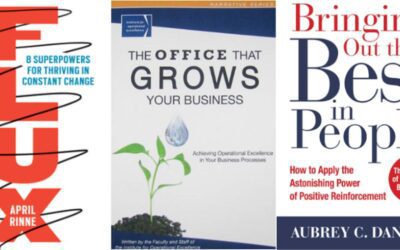The Profit and Loss Statement
Understanding fixed and variable costs is one of the most important aspects of using the Profit and Loss statement for decision making purposes.
Variable Costs = Go up with volume
Fixed Costs = Remain constant over a certain range of volume
It’s easy to underestimate the value of additional volume when looking at fixed and variable costs. If you make additional volume, then the cost for raw materials or parts will also go up. However, expenses like rent and depreciation will be unchanged. Many other expenses are likely unchanged or changed at a rate less than the growth in volume. For example, it is likely you didn’t have to hire additional administrative staff or face an increase in communication cost.
Some effects are more subtle. Insurance is typically priced partially on volume (product and general liability) and partially on value (plant and equipment). Similarly, utilities may be a mix of fixed and variable. If the operation is down for a lack of volume, the lights and HVAC are likely still running.
Let’s assume that you sell your product for $100 and are currently making 10% ($10 per unit) operating profit. A closer look at the costs show that the $100 product has a variable cost of $50. The additional unit sold will add $50 to the operating profit. Thinking this way might change how much you choose to spend for marketing and advertising.
A note about fixed costs
The definition for fixed cost is a cost that doesn’t change over a certain range of volume, but fixed costs do change as the business grows. At some point of volume, the business will need more space, more equipment, more people in sales and administration. When this happens, the change is not gradual like variable costs but increases all at once. You move to a larger building and your rent goes up on a one-time basis. Therefore, most fixed costs might be better thought of as “step” costs, and understanding when they will occur and how much additional cost will be accepted is important for management decisions.
The Balance Sheet
Most manufacturing company owners and managers look at their Profit and Loss statement first without spending much time on the balance sheet. The P&L can tell you a lot about how the business is going, but it’s the balance sheet that shows you the overall financial condition of the company.
Think about the balance sheet in terms of cash and cash flow. Assets show where the company’s cash is deployed while Liabilities and Net Worth show where the cash came from. This makes the balance sheet a vital tool for managing the business.
Let’s look at a few examples:
- If you think about accounts receivable as cash you’re lending to your customers, you might become more concerned about the terms of sale and your customers’ credit worthiness and timeliness. After all, cash “lent” to customers has either a cost in interest or is not available for opportunities.
- Walking through a manufacturer’s warehouse, your guide is quick to tell you about all the great products they make and how they can quickly satisfy any need for product. When you change your perspective on inventory from something tangible to cash, you begin to ask some questions important to business health – Are we spending too much cash on inventory? Does product that hasn’t moved in a year have any actual value? Do we have the right inventory on the shelf? Is there a way to replace inventory faster so we don’t need as much cash sitting there?
- If accounts receivable is essentially loaning money to your customers, then accounts payable can be viewed as borrowing cash from your vendors. The terms of this “loan” are usually really good – zero interest. You will want to get the best possible terms from vendors. A vendor willing to accept 45-day terms instead of 30 is essentially allowing you to ‘borrow’ 50% more money.
- Does the business have an operating line of credit? If so, can it provide the cash the business will need to operate over the next year? If not, would your lender be willing to increase the limits or will you need to conserve cash?
- Long term liabilities, cash that is borrowed on terms where repayment is to be made more than 12 months from now, is a key source of cash for most companies. How much of this is coming from the owners and how much from a bank or other lender? Should the business be concerned about its ability to make the payments? Is the line big enough or the debt small enough that the business could borrow to bring on a new, large customer?
We can help you supercharge your business with more strategic decision making and a managerial view of your financial accounting. Some of the other financial strategies we cover include product costing and margin analysis, budgeting and cash flow modeling, pricing strategy and product management.
Get your on-site no-cost assessment today!



